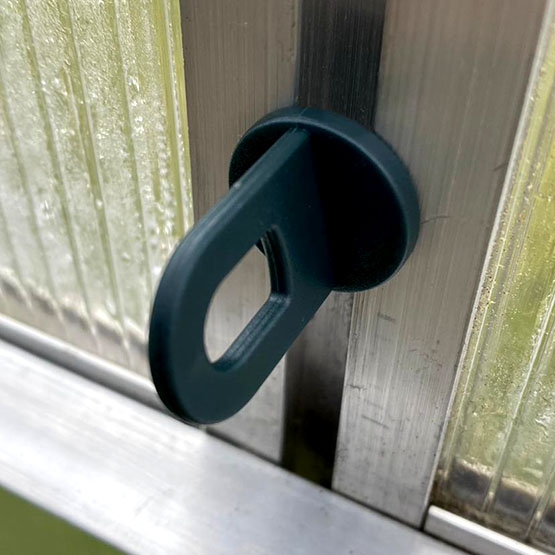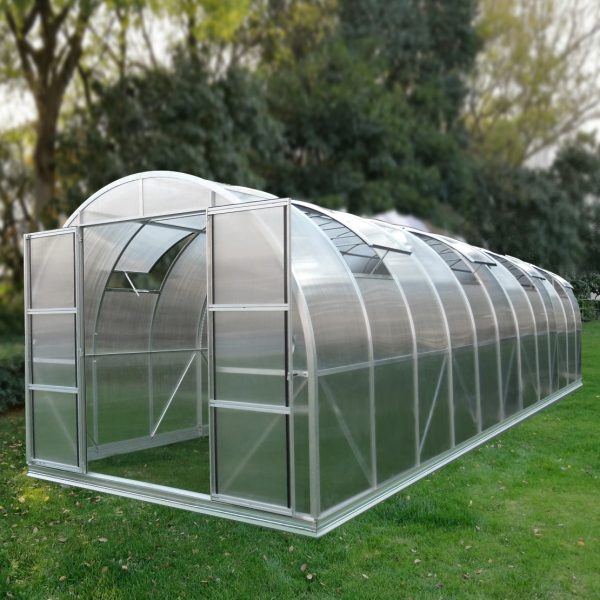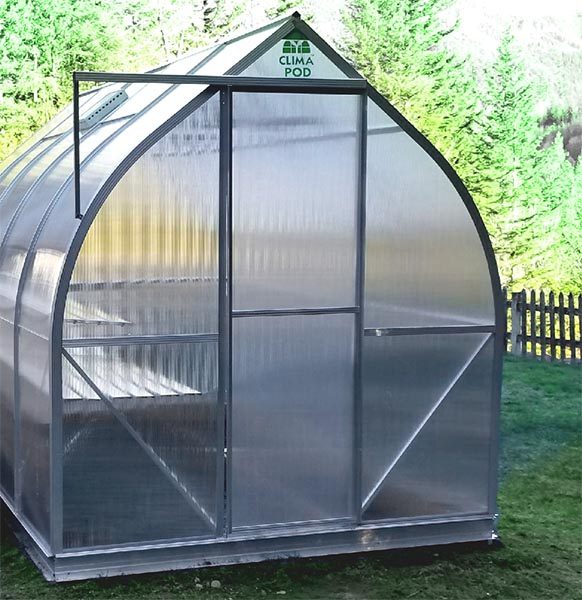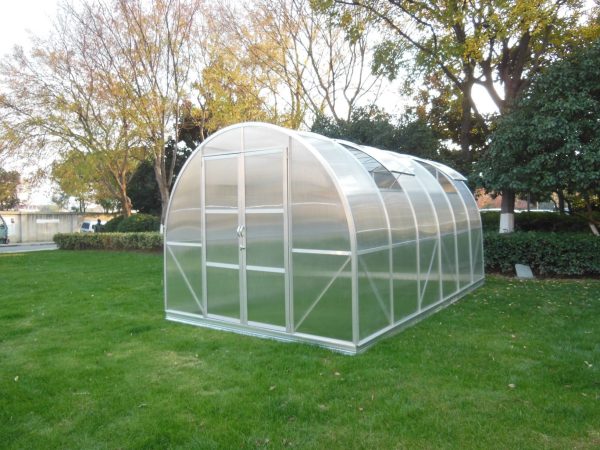Do peppers, eggplants, tomatoes and other greenhouse plants wither, their leaves turn yellow, and do the plants look stunted, despite regular watering and top- dressing? Perhaps they are simply too hot and lacking air. How to fix this problem? Lets figure out how to protect plants from heat inside your greenhouse.
Many novice gardeners believe that by installing a greenhouse, they will immediately solve all the problems with growing heat-loving crops. Alas, this is not entirely true. First, for most regions, sudden temperature changes are characteristic, leading to the fact that plants overheat during the day and freeze at night. And secondly, the heat in the greenhouse does not have a favorable effect on the potential yield – the plants wither, the pollen becomes sterile, and photosynthesis slows down. To avoid this, it is necessary to maintain a comfortable temperature and humidity level in the greenhouse for plantings.
What temperature and humidity should be in the greenhouse
In the middle of summer, the temperature in the greenhouse can rise to 40-45°C (105-115°F). Of course, this is an unacceptable indicator, because pollen becomes sterile already at 30-35 °C (85-95°F). How many degrees should be in the greenhouse for the plants to feel comfortable?
The answer to this question, first of all, depends on what exactly you have planted in the greenhouse. Different crops require different levels of temperature and humidity for trouble-free growth and active fruiting. We will mention the main ones:
- cucumbers prefer air temperature of 25-28°C during the day and 18-21°C at night, soil temperature – 22-24°C, air humidity – 75-85%;
- tomatoes grow better and bear fruit at an air temperature of 20-22°C during the day, 18°C at night, soil temperature 20-22°C, air humidity 60-70%;
- peppers feel comfortable at an air temperature of 25-28°C during the day and 20-23°C at night, and an air humidity of 66-75%;
- eggplants love it when the air warms up to 25-28 ° C during the day, and at night it cools down to no more than 20 ° C, while air humidity is preferred no higher than 50-60% (with high soil moisture).
As you can see, it is the requirements of the plants themselves that are the main contraindication to the joint cultivation of certain crops. Yes, you can plant them all in one greenhouse and even get some yield, but it will be much less than with monoplanting.
How to Lower the Temperature in a Greenhouse to Protect Your Plants from the Heat
Any experienced gardener knows: left the house in the morning – open the door to the greenhouse wide open. However, in the July heat and calm, this will not be enough to lower the degree in the greenhouse, and the plants will still suffer. There are more effective, although more time-consuming ways.
Greenhouse painting to protect plants from heat
It’s not the best method to use, but it works reliably so we have to mention it. This is painting the greenhouse with homemade paint based on lime, chalk or clay. True, it works only on greenhouses made of polycarbonate and glass, but with film shelters it is impossible.
In order to minimize sunlight on plants and heating the air in the greenhouse, its roof and upper parts of the walls are thickly whitened, turning them into almost opaque.
If you paint the greenhouse outside to protect your plants from heat, the first rain will wash away all your efforts, and over the summer you will enrich the soil around with a huge amount of unplanned substances. Therefore, it is better to whiten carbonate or glass from the inside, but do this before planting seedlings so as not to pour over and trample it. And in the fall, carefully wash off the coating during the seasonal treatment of the greenhouse.
Artificial shelters for the greenhouse
Another option for protection from the sun is to create shelters on the south and east sides or from above. As a material for shelter, you can use either ordinary dense spunbond or burlap, or special protective nets with a partial reflective effect. The nets look neater and are sold together with fasteners, besides they are designed for greenhouses of standard sizes, but from improvised materials you can assemble a structure of any size and shape.
If there is an excess of light on only one side, then you can also build a light shield, which will be dismantled in the off-season.
Canopy plants for greenhouse shading
Another unusual but effective method can be considered planting plants with lush greenery next to the walls of greenhouses. Any vines or shrubs used to create hedges are ideal. True, this method also has a nuance – such a wall will absorb light even in a cold and rainy summer, so it can become a serious competitor for greenhouse crops.
If you have a spacious greenhouse and there is no need to fight for every meter of insulated area, you can plant fast-growing vines on the inside of the building. Their foliage forms a green canopy inside and will shade your gentle pets.
Ventilation of the greenhouse to protect your plants from heat
The minimum that you simply must take into account when choosing a greenhouse is the presence of at least a pair of vents for cross-ventilation. In modern models, parts of the roof are raised, parts of the walls are removed, sensors for temperature control and automatic ventilation are installed.
However, if you do not consider it rational to spend money on these delights, then at least regularly open the windows in the greenhouse to protect plants from heat.
Installation of fans in the greenhouse
If there is only one window in the greenhouse and it is impossible to create a draft in a natural way, an ordinary fan will come to your aid. It can be installed both at ground level and on top of the rear wall of the greenhouse. The same option works if you have a large greenhouse complex.
However, this method has a couple of significant drawbacks. Firstly, you will spend a lot of money on paying for additional electricity, and secondly, you will need a large extension cord that can be pulled into the greenhouse from the nearest power source.
Water containers inside your greenhouse to protect plants
Not so much to cool the greenhouse in the heat, but to mitigate the daily temperature drops allow water containers of different sizes. Most often, plastic or metal barrels of large volume are used for this, but plastic bottles laid in the aisles and directly on the ridges are also suitable. During the day, the water in the containers will heat up, and at night it will gradually give off heat, warming the plants.
In barrels installed in the greenhouse, you can not only defend water for irrigation, but also prepare grass fertilizers or withstand dissolved litter before top dressing.
How to increase humidity inside a greenhouse
Not only the wrong temperature can kill the plants in the greenhouse – the humidity level is also important. The simplest indoor hygrometer will help measure it.
Why is it impossible to deviate from the moisture level recommended for the selected crop? Because when it is lowered, the plants will begin to dry, and if it is exceeded, they can rot or become a victim of fungal diseases. In addition, if the humidity is too high, pollen will stick together on the flowers, and the ovaries simply will not appear.
However, if you can lower the level of humidity in the greenhouse by ordinary ventilation and mulching, then you will have to try to increase it.
Watering paths in the greenhouse
The easiest way to increase the humidity in a greenhouse is to water it regularly. However, this has its own subtleties. If you water the plants too often, then the nutrients will be washed out of the soil, and soon this will be noticeable by changing the color and shape of the leaves. That is why it is better to water the paths in the greenhouse, and not the ridges themselves, and also mulch the plantings to reduce the rate of moisture evaporation.
It is advisable to water the paths in the first half of the day so as not to breed cold night dampness in the greenhouse, which contributes to the development of pathogenic microorganisms.
Steam generators or water sprayers
Another way to solve the problem with the help of technology is to install water sprayers or cold steam generators. True, it is worth remembering that only crops that love high humidity, for example, cucumbers, will like this approach, but it will be unacceptable for tomatoes.
The system itself is mounted quite quickly, it works by the hour, but for its operation it is necessary that you have water available all the time.
You can simply attach the spray nozzle to a standard garden hose and spray your greenhouse with water every day.
It is better to provide for all these measures at the stage of greenhouse construction or before planting, but some of them are never too late to apply. If you notice that your plantings are clearly overheating, hurry to lower the temperature in the greenhouse, otherwise you may be left without a crop.






